Physics > Lab Experiment > PHY2048L-013 Experiment 2 Acceleration due to gravity (All)
PHY2048L-013 Experiment 2 Acceleration due to gravity
Document Content and Description Below
Experiment 2 Acceleration due to gravity Purpose of Experiment The purpose of experiment 2 was to measure the acceleration due to gravity on two different sized steel balls, assuming that air resis... tance is negligible. This is accomplished using a timing pad. Theory Summary If an object is dropped it falls to the earth, but why? Isaac Newton created a formula for the Law of Gravitation which describes the attraction between objects with mass. His formula shows that objects of larger mass exert a much greater gravitational force than objects of smaller mass. Hence, we can observe the force exerted upon us by Earth (gravity) while we cannot observe this force between normal, everyday objects. Newton’s Law of Gravitation, when calculated, results in a force (the force of gravity). The Law of Gravitation is Fg=G(m1m2/r2 ) where G is the gravitational constant, m1 and m2 are the masses of two objects, and r is the distance between the centers of the objects. Using the equation F = ma, where m is mass, a is acceleration, and F is the sum of the forces acting on an object, we can solve for a: a = F/m. Mass as the denominator cancels out the greater force of attraction due to the difference in mass, so acceleration due to gravity is the same in all instances on earth and comes out to 9.8 m/s2 . On another planet this acceleration would be different but also constant. Free fall motion, where an object is dropped and air resistance is negligible, can be expressed with the equation h = ½ gt2 where h is the distance the object falls, g is the acceleration due to gravity, and time is the amount of time since the object was dropped. Using this equation, we should be able to reliably predict how long it takes an object to fall from a given height. We can also calculate how far an object will fall in a given time. Experimentally, if we know the height an object falls and how long it takes to fall (such as in this experiment), we can calculate the object’s acceleration due to gravity. This should come out to about 9.8 m/s2 . Methods Most of the methods for this experiment are attached in the attached table and graph. The mass and diameter of two different steel balls were measured using a Vernier caliper. Each ball was connected to a release mechanism at a given height from a timing pad. The release mechanism and timing pad were both hooked up to a computer. As soon as the ball was released from the mechanism a timer would start. The timer subsequently stopped when the ball hit the timing pad. This is more reliabl [Show More]
Last updated: 1 year ago
Preview 1 out of 5 pages

Reviews( 0 )
Document information
Connected school, study & course
About the document
Uploaded On
Sep 19, 2021
Number of pages
5
Written in
Additional information
This document has been written for:
Uploaded
Sep 19, 2021
Downloads
0
Views
151



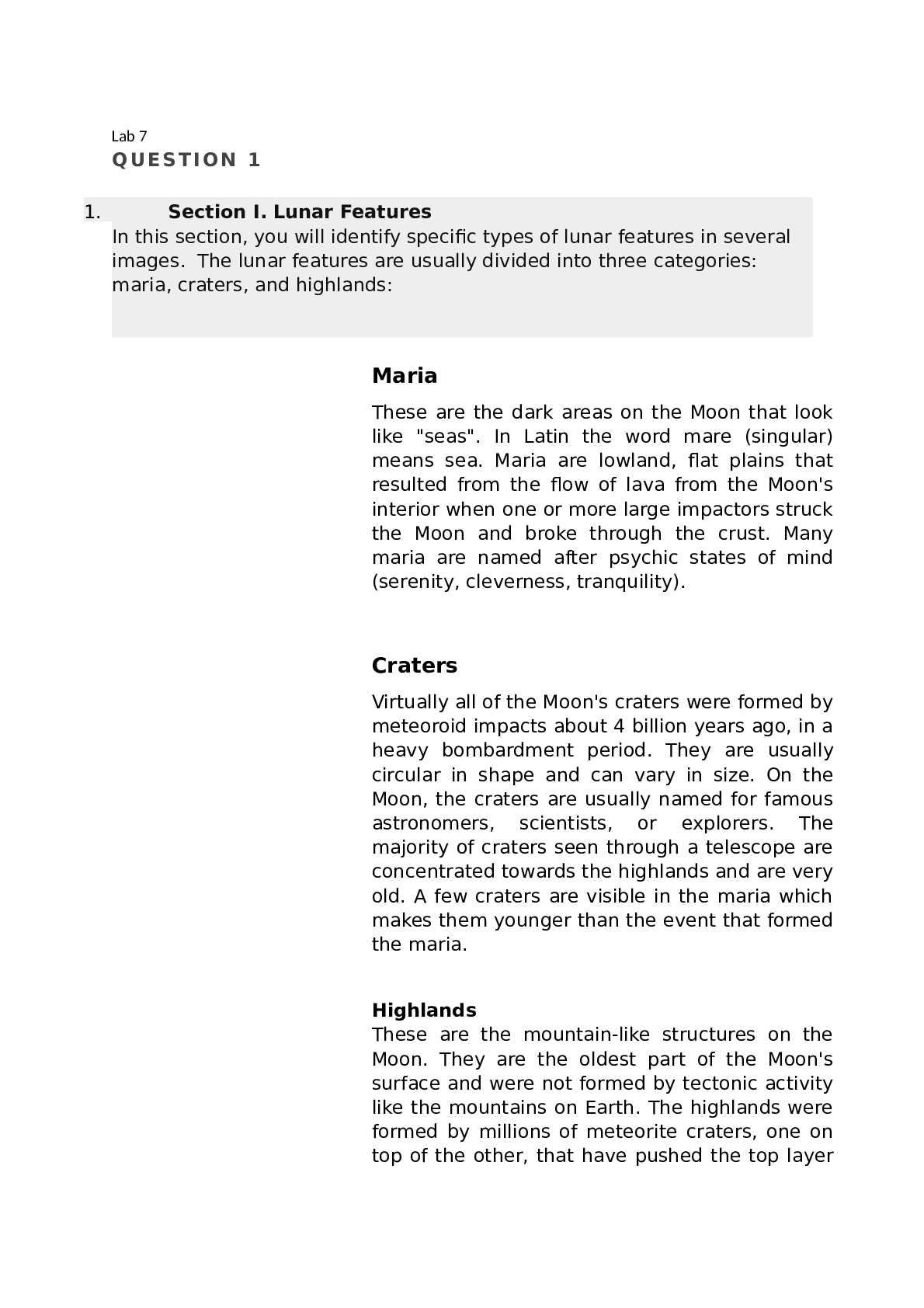







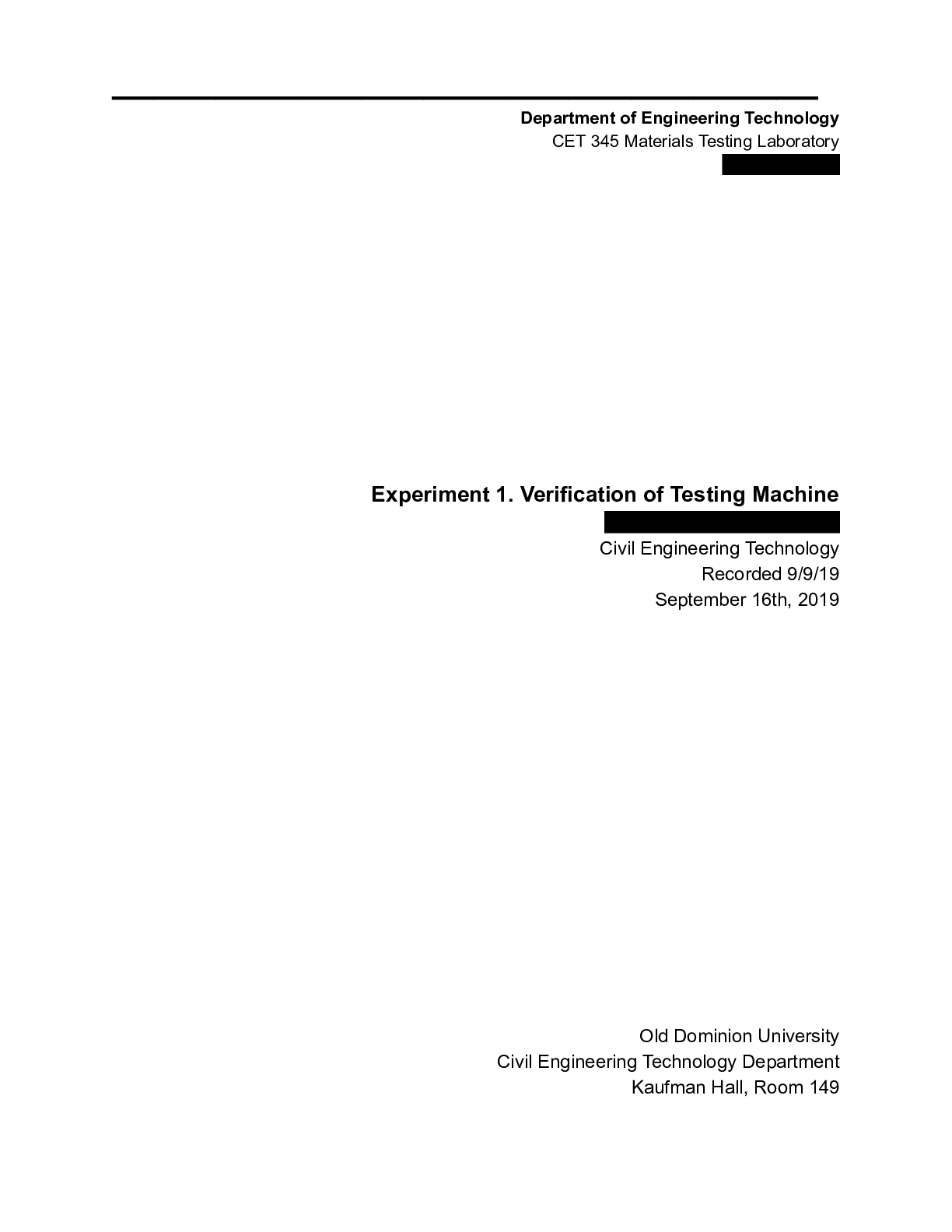
.png)


.png)
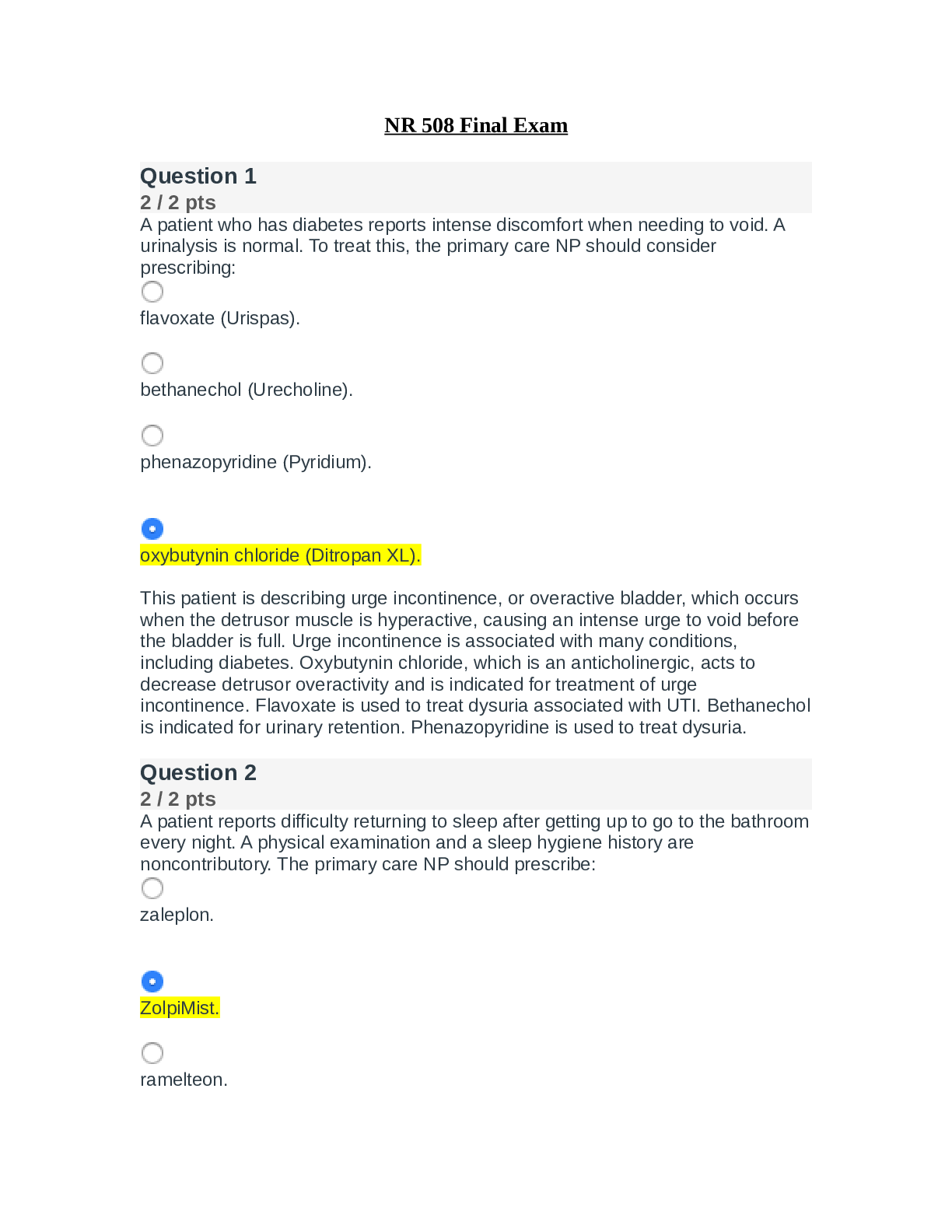




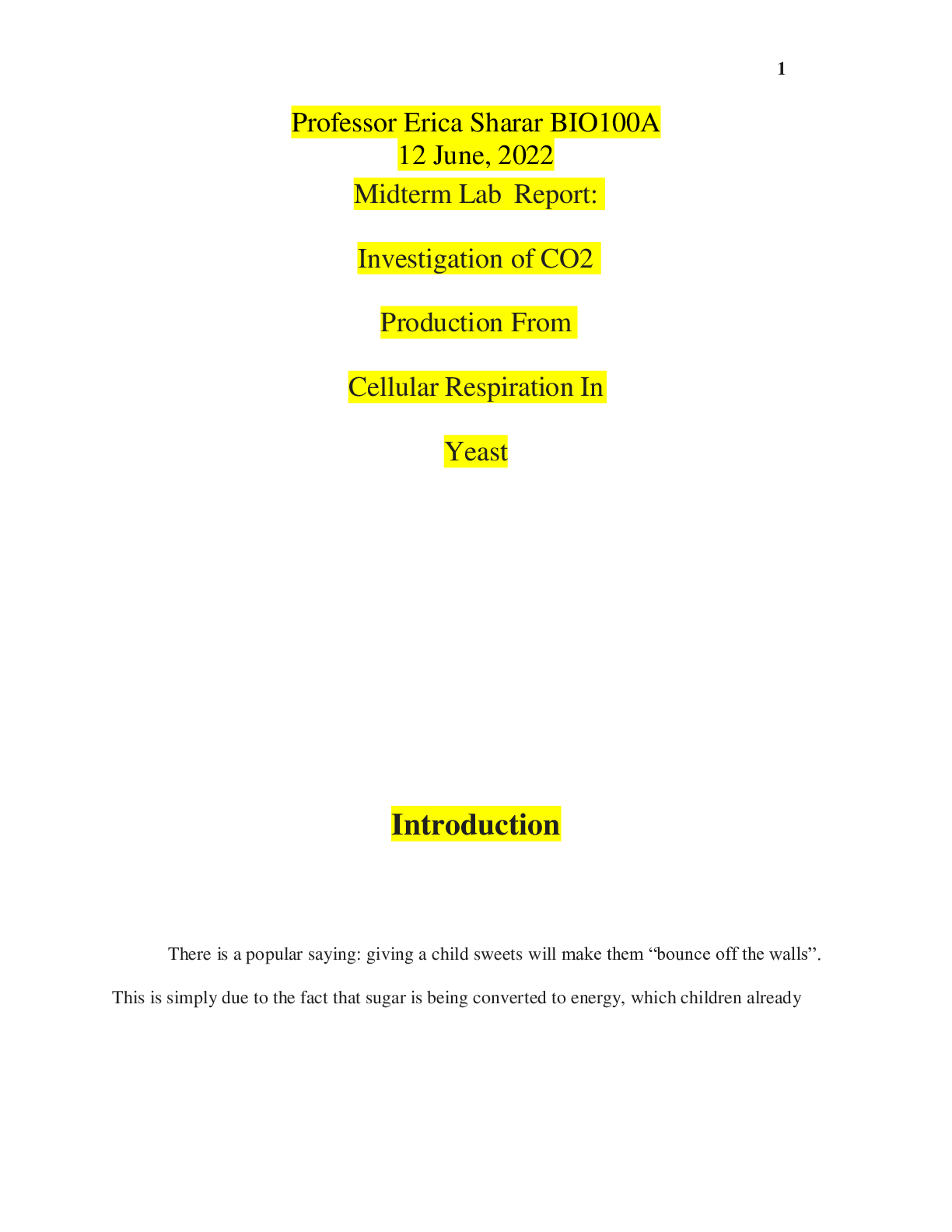


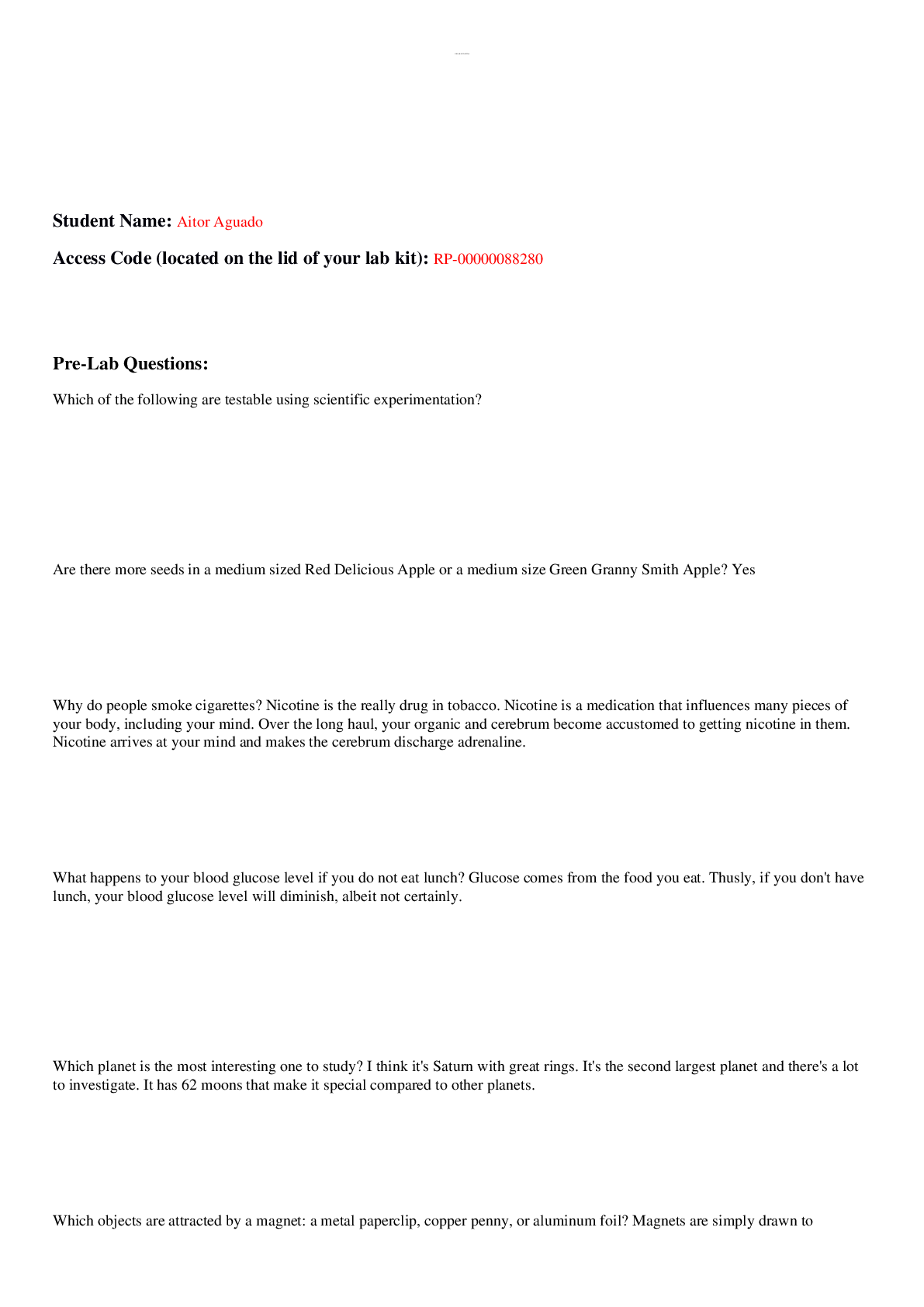
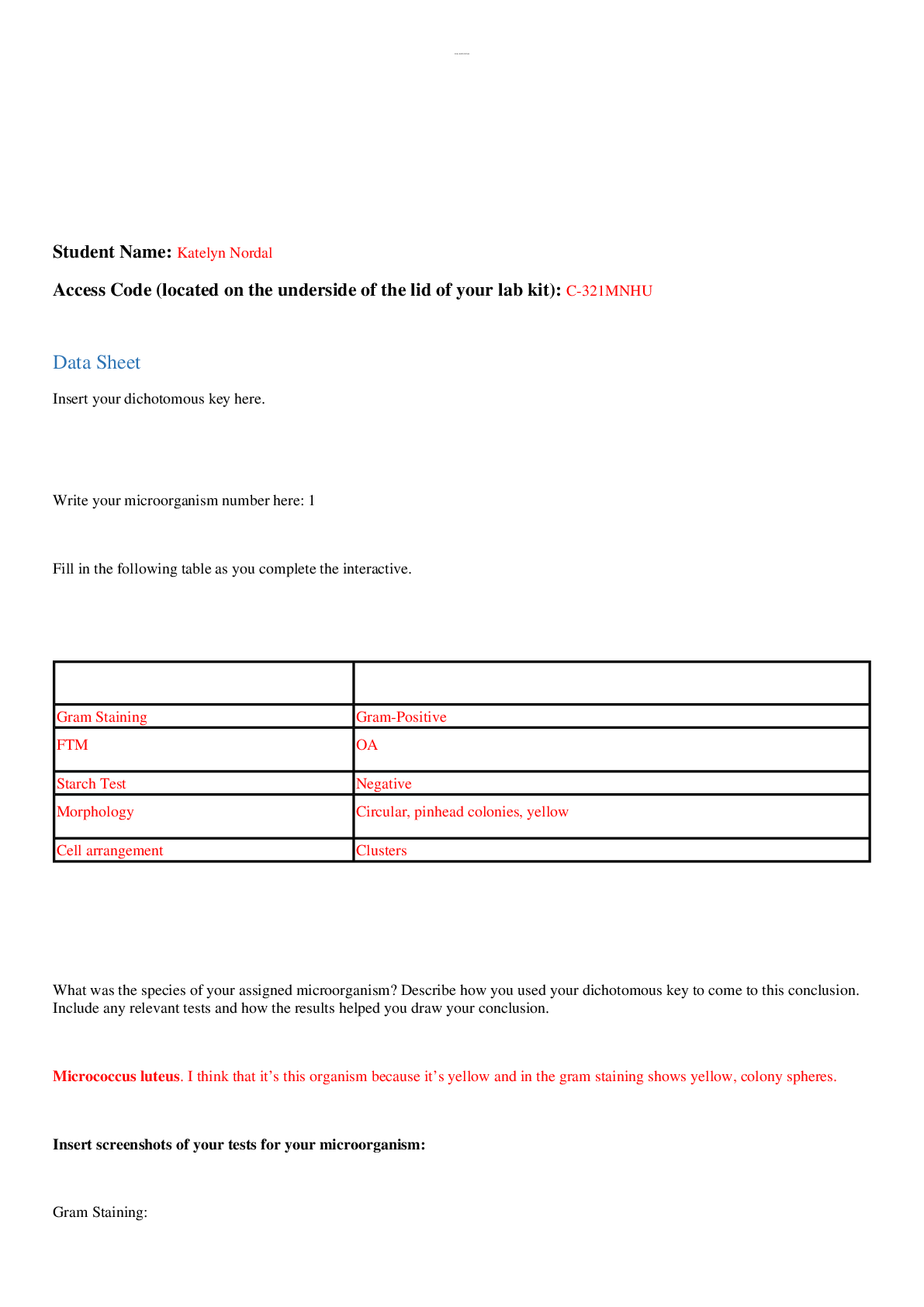


.png)







